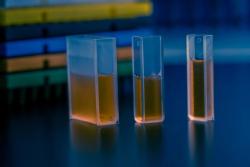
OR WAIT null SECS
- About Us
- Advertise
- Contact Us
- Editorial Info
- Editorial Advisory Board
- Do Not Sell My Personal Information
- Privacy Policy
- Terms and Conditions
© 2025 MJH Life Sciences™ , Pharmaceutical Technology - Pharma News and Development Insights. All rights reserved.
Cell Imaging Tech from GE Healthcare Offers Precise Biomarker Analysis
Pharmaceutical Technology's In the Lab eNewsletter
Cell DIVE is a new cell imaging technology from GE Healthcare that allows for more precise biomarker analysis.
Cell DIVE is the latest tech offering from GE Healthcare, which launched the cell imaging system in late September 2019. Cell DIVE multiplexed imaging is an antibody-based system that allows for more precise biomarker analysis.
The technology was developed by scientists for scientists, GE Healthcare stated. The seminal work started in 2008 and the first patent was issued in 2009. Over the last decade, Cell DIVE has been evaluated globally through multiple collaborators resulting in a library of publications, presentations, and research.
At its core, scientists will iteratively probe, image, and de-stain to capture thousands of spatial cellular data points from just one tissue image. With an extensive list of validated antibodies in GE Healthcare’s library, scientists can customize their own panels and have the flexibility to stain and image as they need. Tissue sample would not be harmed with the gentle protocol used by the system, such as no stripping of antibodies or complicated sample prep required.
“Cell DIVE multiplexed imaging is another example of our commitment to furthering access to life-changing biotherapeutics and diagnostics,” said Emmanuel Abate, general manager Genomics and Cellular Research, GE Healthcare Life Sciences, in a Sept. 26, 2019 company press release. “These are exciting days in immuno-oncology and we are early in our understanding in how a patient’s biomarker profile contributes to a therapeutic outcome.”
“The flexibility of an open system that allows for custom biomarker panel design moves us closer to a definitive diagnostic tool,” said Prachi Bogetto, Diagnostics Segment leader, GE Healthcare Life Sciences, in the press release. “This flexible solution also supports whole slide, region of interest, and tissue microarray (TMA) imaging.”
Source: GE Healthcare



